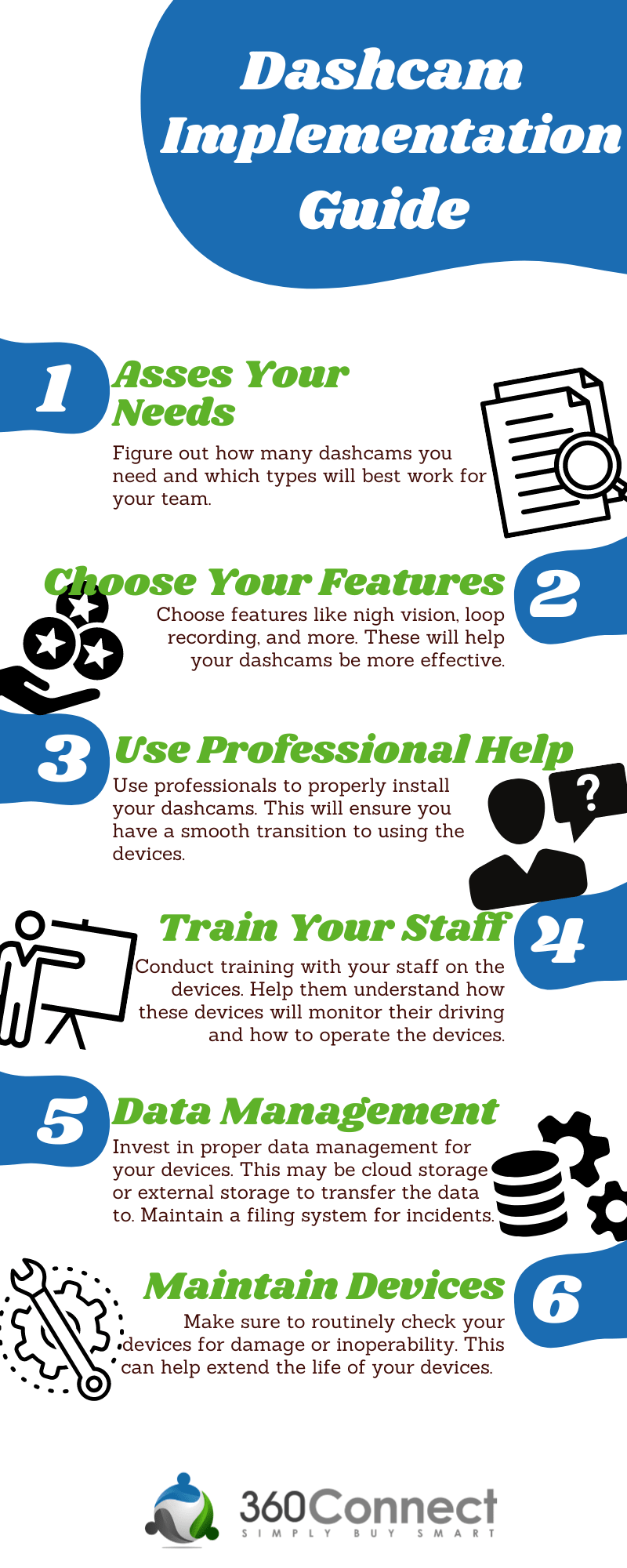Dashcams are cameras that are placed on your car dashboard and record events (usually accidents) during a driving trip. They capture live footage that is then stored either on the device with an SD card or on the cloud. Dashcams can record footage in 720p, 1080p, and even 4k depending on the model you choose. These devices are great because they provide a verified way to determine who is at fault during an accident, among other things.
How Do Dashcams Work?
While some devices simply plug and play when using a cigarette lighter, most gain power by being plugged into a vehicle’s electrical system. They automatically turn on when the vehicle kicks on. You may be wondering, does the dash continuously record?
Most systems use the method of loop recording. This means that the dash cam is continuously recording until a memory card is full. If no incidents occur, the camera will then begin to overwrite that footage with another loop of new footage. These loops of footage can be a couple of minutes or hours long. When an incident occurs, that video is saved in another file/folder, so it is not deleted. However, you’ll want to export that video clip as soon as possible to prevent it from being accidentally overwritten.
Types of Dashcams
There are a couple of types of dashcams that are common for most users:
- Single lens dashcam: These are front-facing lenses that record out the front window.
- Interior dashcams: These dashcams have lenses that face inward towards the driver and record the driver.
- Dual lens dashcam: There are actually two different types under this term. The first is a dashcam that has a lens on both the front and back of the device. This records both the front view and cabin of the vehicle. The second is to have a dual lens dashcam that records both the front of the vehicle and the back of the vehicle.
With commercial systems, these devices can be implemented into fleet management technology. These devices can be programmed not only to record accidents, but harsh breaking, driver awareness, and reckless driving.
Features & Benefits of Dashcams
Some of the most important features that dashcams provide are:
- Instant recording
- Night vision
- GPS integration
- Fleet management software integration
- Motion detection for when accidents happen or when evasive driving.
- Audio recording in select models
- Software integration capabilities in commercial models
- Automated video recording
- Easy power source to run devices
- Multiple methods for storage
Enhanced Driver Safety and Accountability
Dashcams record conclusive proof in the event of an accident. This tape is critical for evaluating faults, which can be useful in legal and insurance cases. These devices also make it easy to monitor bad driver behavior and deter things like harsh braking. Companies can even set up reward systems based on the best driving. This can also help drivers spot bad habits and make changes to improve safety.
Insurance Benefits
Recorded film makes the insurance claim process easier by providing concrete evidence of the events surrounding an accident. This can speed up claim processing and avoid false claims. The presence of these devices is viewed as a risk-reduction strategy, which can result in significant cost savings for businesses.
Operational Insights and Efficiency
Dashcams with integrated GPS assist drivers in evaluating their trips. This can lead to more efficient route planning, resulting in time and fuel savings. Understanding that dashcams can be a bigger part of your overall fleet management system can help you get the most usage out of them.
Maintenance Help
Dashcams can help spot potential damage or wear and tear on fleet vehicles. This can help drivers fix issues as they arise. You can also document how this damage happened.
Transparency
Installing dashcams in your trailers that can be viewed can help provide transparency with high-value cargo. Not only is this a great operational tool, but it’s also a great marketing tool to help build confidence with your customers.
Documentation
Dashcam makes it easy to build documentation of incidents for future reference. This process can be automated for your company. Whether you are storing this documentation for legal reasons or for training purposes, dashcams make this process simple.
Price of A Dashcam
There is a wide range of available dashcams on the market. You can buy in bulk from a certified supplier like Motive, or you can buy each device separately. You can expect to spend anywhere from $100-$500 per device. If you’d like a full-price breakdown, check out our article here:
How Much Does a Dashcam Cost?
Learn MoreFAQ About Dashcams
Yes, it is legal to use a dashcam as long as it doesn’t obstruct the driver’s view.
Some dashcams do have this ability. You’ll need to check with your provider if you need this feature.
No, if you need that feature. Those that record sound may also cost more than those that don’t.
Yes, you’ll want to check with your local and state laws to make sure what restrictions are placed on your usage of dashcams. Some states have restrictions on recording sounds in the cabin of commercial vehicles.

Do You Need Dashcams for Your Fleet?
Are you interested in dashcams for your fleet of vehicles? Would you like to work with a company that’s known for quality and consistency? 360Connect can help your search. Just fill out our 1–2-minute forms and we’ll contact you to verify your information and needs. From there, up to 5 suppliers will reach out to you with quotes. This process is free and be completed in just a couple of minutes!

